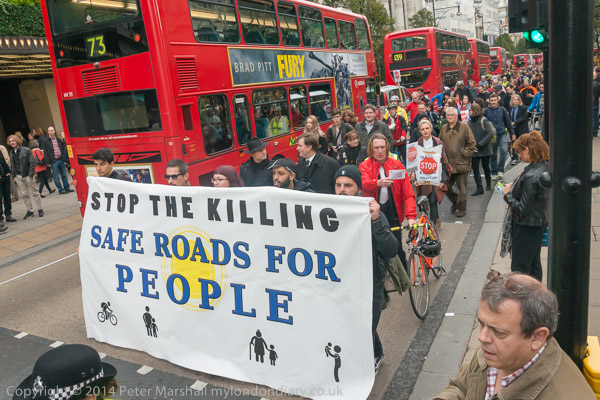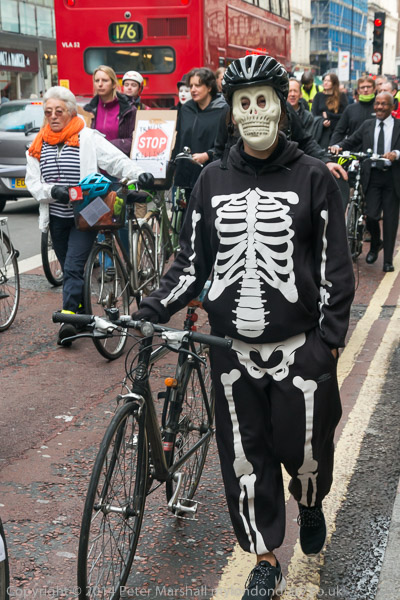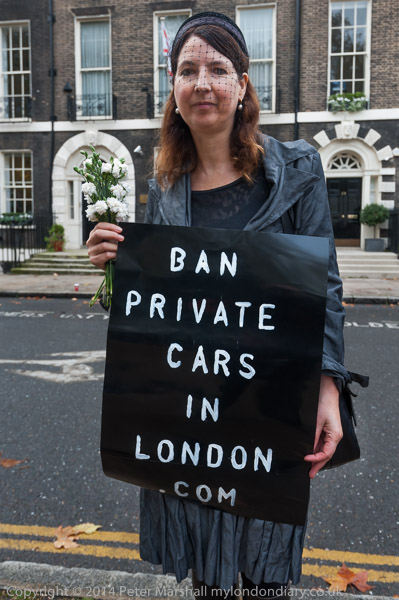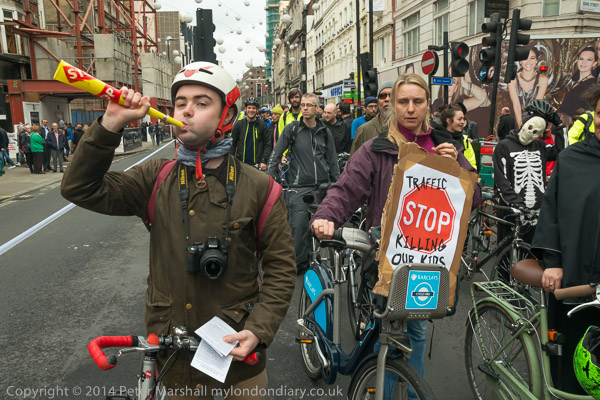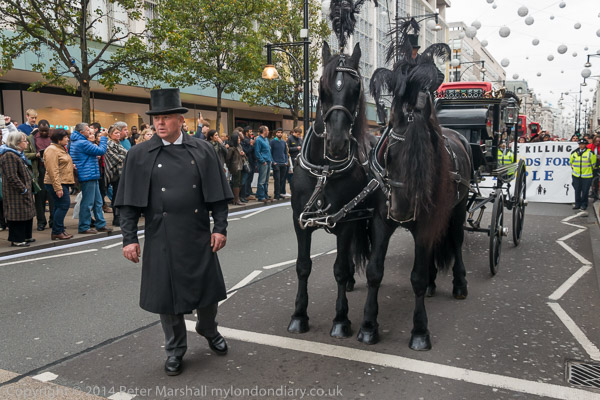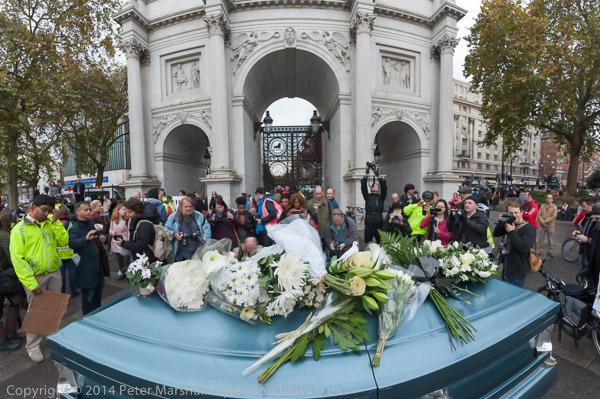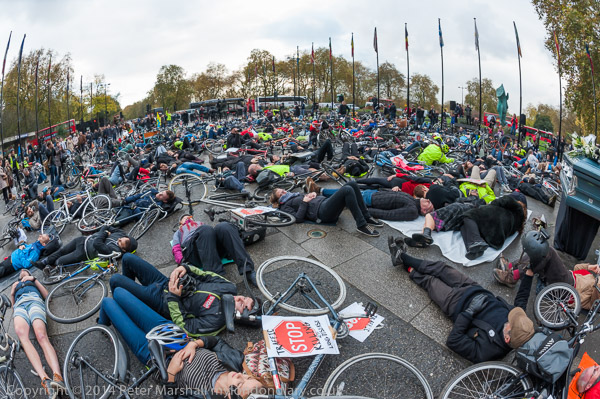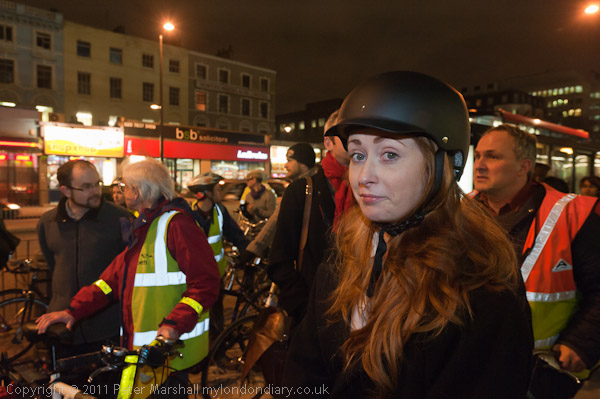
On the evening of Monday 9th January 2012 cyclists and pedestrians protested at Kings Cross in the evening rush hour calling for an end to the killing of cyclists on city roads.
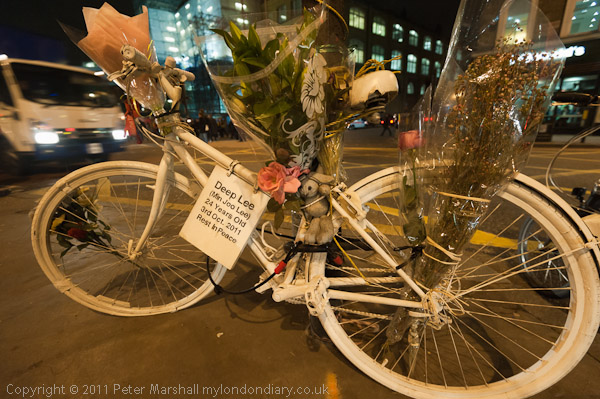
Bikes Alive wanted Transport for London to make changes in their policies which are leading to too many cyclists being killed on London’s Streets and were taking more direct but peaceful action to put pressure on them to make cycling in the city safer.
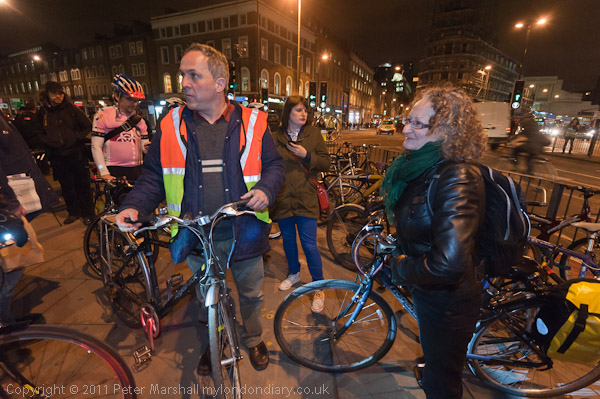
Kings Cross was chosen as one of the most dangerous areas for cyclists with major roads including Euston Road, Pentonville Road, Caledonian Road, Kings Cross Road all meeting in a gyratory system of confusing one-way streets.
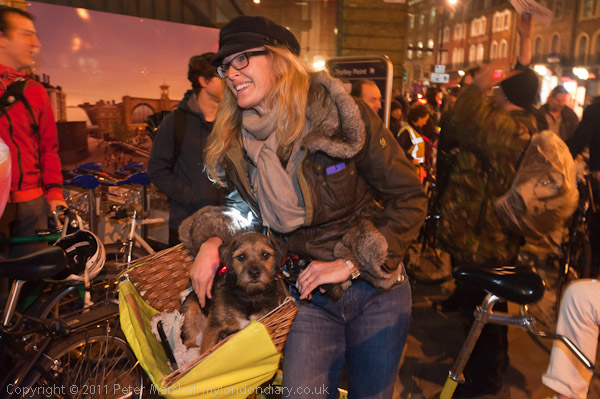
In particular they want changes at all major road junctions with longer gaps between different phases that would allow both pedestrians and cyclists to clear junctions before traffic from other directions dashes across, as well as changes that will lead to reductions in private car use in London and an increase in bike use.
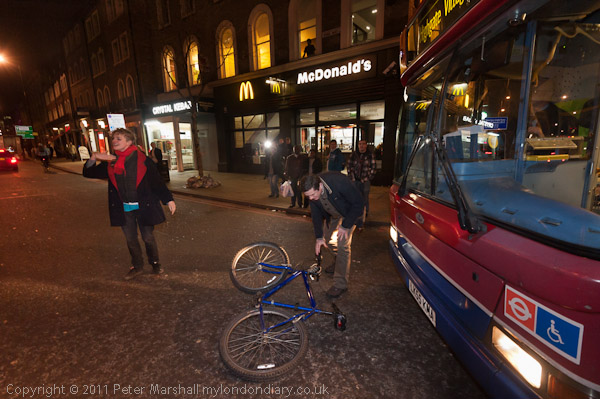
Similar protests in later years have been organised by Stop Killing Cyclists who began with a major ‘die-in’ protest outside TfL’s HQ in November 2013.
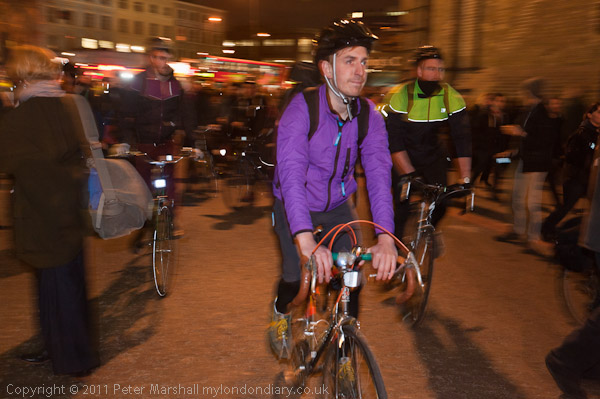
I arrived early for the Bikes Alive protest and found a group of friends of cyclist Deep Lee (Min Joo Lee), a 24-year old student who was killed riding her bike there on 3 Oct 2011 came to put fresh flowers on the ‘ghost bike’ which is chained to a lamp post at the centre of the junction.
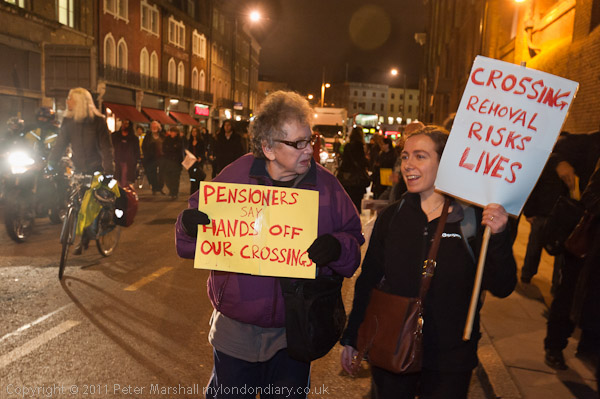
Others soon began to arrive on bikes and on foot, gathering on the wide pavement in front of Kings Cross Station, including a dozen or so police officers on bikes. As well as Bikes Alive spokesperson Albert Beale who had said that this protest “is the first step in a campaign to stop – by whatever nonviolent means needed – the completely unnecessary level of deaths, injuries and fear inflicted by motorists on the more vulnerable“.
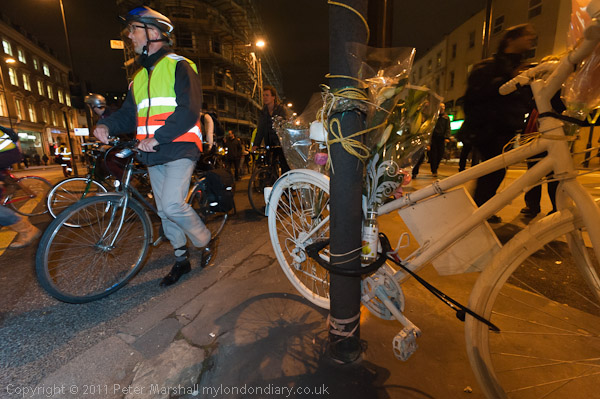
Green Party mayoral candidate Jenny Jones took part, stating “London’s roads must be fixed urgently if we are to make them safe for cyclists and all other road users. This is the Mayor’s responsibility, and I hope that if we make a statement through peaceful, direct action he will start to listen.”
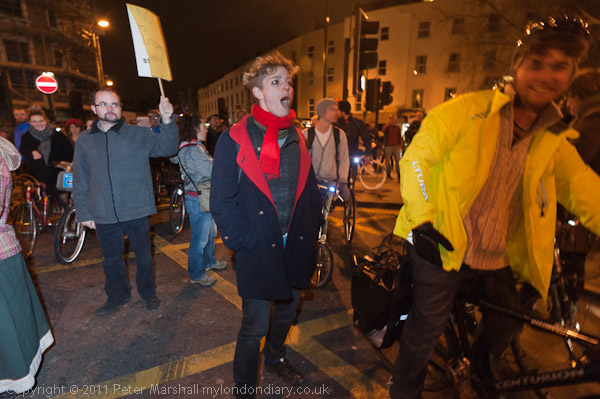
Also present was Tamsin Omond of Climate Rush, who have organised several cycle protests, including one in July 2011 against London’s terrible air quality with briefly blocked a junction a little to the west of tonight’s protest.
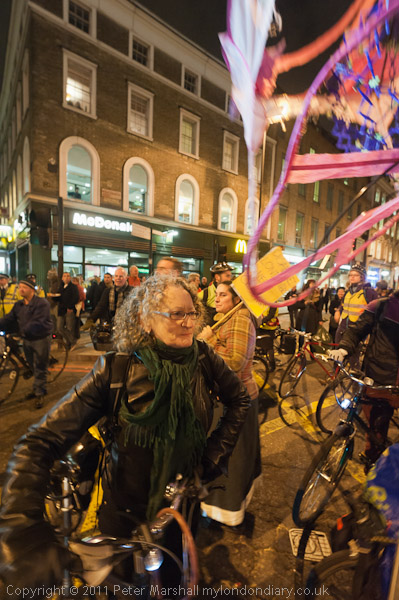
Eventually the protester began to cycle slowly, accompanied by protesters on foot on the roads around the junction, turning up York Way and then returning back down Caledonian Road and returning to Kings Cross where some stopped to block the box junction. When police came and told them they had to move they made a few circuits along a short section of the Euston Road in front of Kings Cross, making a ‘U’ turn at the traffic lights and going back east along the road to go around the one-way system again. By the time they were on their second or third circuit I felt I had seen enough and left.
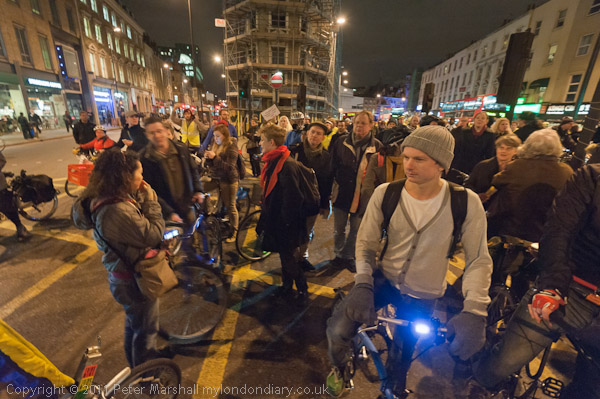
London’s roads eleven years later remain dangerous for cyclists, and this junction in particular was among the three still named as the most dangerous of 22 that the London Cycling Campaign named in parliament in November 2022 as needing urgent action. There have been some improvements, with new cycle ‘super-highways’ and changes in traffic light phasing, but much more still needs to be done to make the city safer, with huge benefits in public health as many more people who would cycle if they felt safe. Unfortunately some London councils, partly thanks to lobbying from taxi drivers and others, still have virulent anti-cycling policies.
More at Bikes Alive – End Killing Of Cyclists.
Bhopal: Drop Dow From London Olympics
Earlier that day I had photographed another protest, where Farah Edwards, a survivor of the Bhopal Disaster, challenged Lord Coe, and Mayor Boris Johnson, to taste some Bhopal drinking water, bottled as ‘B’eauPal’ mineral water. 200 days before the start of the London Olympics they called for London to drop Dow Chemicals as a major sponsor, as thousand of families in Bhopal are still being poisoned by the Bhopal disaster, when Union Carbide, a subsidiary of Dow Chemicals, released a huge dense cloud of lethal gas from their plant on the night of December 2-3, 1984.
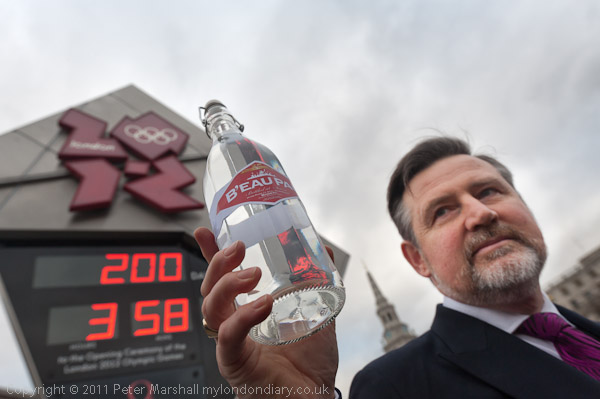
Government estimates say more than 3,700 died immediately and since deaths have risen to between 8,000 and 25,000 people. Around 100,000 to 200,000 people are thought to have permanent injuries and the number continues to grow as much of the contamination produced by the disaster has not been cleaned up.
But of course the idea that Lord Coe or Johnson would worry for even a split second about taking dirty money for the Olympic project was ridiculous.
Bhopal: Drop Dow From London Olympics
